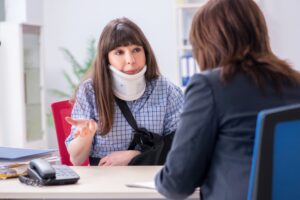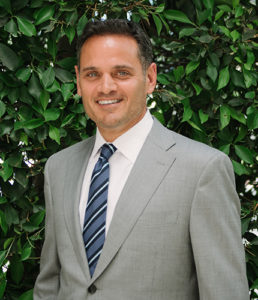How to Claim Injury in an Accident
How to Claim Injury in an Accident
When other drivers and property owners behave negligently or carelessly, serious accidents may happen, resulting in serious injuries. To demonstrate that a particular injury is related to an accident, the accident victim should first consult with a knowledgeable personal injury attorney in their area.
If you recently suffered injuries in an accident, your attorney can retain various experts in your case, including medical experts who can causally relate your claimed injuries to the accident itself. A car accident lawyer can also file a claim or lawsuit to pursue the monetary recovery you deserve.
Types of Motor Vehicle Collisions and Pedestrian Accidents That Cause
Injuries

Motor vehicle collisions and pedestrian accidents can take various forms, each presenting unique challenges and risks. Rear-end collisions are among the most common types of motor vehicle accidents. These occur when one vehicle crashes into the back of another, often due to factors like sudden stops, tailgating, or distracted driving. While these accidents can result in varying degrees of vehicular property damage, they frequently lead to injuries, particularly to occupants in the front vehicle.
Moreover, head-on collisions involve vehicles colliding with their front ends facing each other. These accidents are often severe and can lead to catastrophic injuries due to the combined force of both vehicles. Factors contributing to head-on collisions include impaired driving, wrong-way driving, and overtaking other vehicles in designated no-passing zones.
Side-impact collisions, also known as T-bone accidents, transpire when the front of one vehicle strikes the side of another. Intersections are common sites for these collisions, often occurring when one driver fails to yield or runs a red light or stop sign. The nature of side-impact collisions increases the vulnerability of occupants on the impacted side of the vehicle, potentially causing serious injuries.
Collisions with pedestrians are another category of accidents, presenting their own set of risks. Crosswalk accidents may occur when a pedestrian is struck while crossing the street, often at designated crossings equipped with crosswalks. Another type of pedestrian collision is the right-turn accident, where a turning vehicle strikes a pedestrian crossing the street. This may happen at intersections, especially when drivers focus more on turning than on pedestrians in their path. Such accidents highlight the importance of driver awareness and adherence to traffic rules.
In addition to these, parking lot collisions are frequent occurrences. These accidents often result from drivers navigating crowded parking lots, leading to fender-benders, sideswipes, or even more significant collisions. Limited visibility and a mix of moving and parked vehicles contribute to the complexity of parking lot accidents.
Understanding these common types of motor vehicle collisions and pedestrian accidents is crucial for promoting road safety. If you suffered injuries in one of these accidents, an experienced personal injury attorney in your jurisdiction can file a timely claim on your behalf with the appropriate insurance company.
Why do Injuries Occur in Motor Vehicle and Pedestrian Accidents?
Injuries frequently occur in motor vehicle and pedestrian accidents due to various factors that amplify the risks and severity of collisions. One primary factor is the vehicle’s speed. The faster a vehicle travels, the more force is involved in a collision. High-speed accidents often result in more severe injuries, as the kinetic energy involved can cause significant damage to both vehicles and individuals involved.
Distracted driving is another major contributor to accidents and subsequent injuries. With the prevalence of smartphones and other in-vehicle distractions, drivers often divert their attention away from the road, leading to delayed reactions and a higher likelihood of collisions. Whether texting, adjusting the radio, or engaging in other distractions, drivers not fully focused on the task pose a considerable risk to themselves and others on the road.
Failing to obey traffic rules and signals is another common factor in accidents. Disregarding stop signs, running red lights, or failing to yield the right-of-way promptly can lead to collisions, especially at busy traffic intersections. These violations of traffic regulations often result in a lack of predictability on the road, increasing the chances of accidents and injuries.
Impaired driving, whether due to alcohol, drugs, or prescription medications, significantly contributes to the occurrence and severity of accidents. Substance-impaired drivers exhibit compromised coordination, reduced reaction times, and impaired judgment, making them more prone to accidents that can result in injuries to themselves and others.
In essence, injuries in motor vehicle accidents and pedestrian accidents are the result of a complex interplay of factors, including speeding, distracted driving, traffic rule violations, and impaired driving. If a negligent driver caused your accident, an experienced personal injury lawyer can explore your legal options and take the appropriate steps on your behalf to pursue the compensation you need.
How to Successfully Prove Your Injuries and Damages in a Claim or Lawsuit
Successfully proving the nature and extent of injuries arising from motor or pedestrian accidents requires a comprehensive and strategic approach. Here are some key considerations to bear in mind when building a compelling case:
- Prompt Medical Attention – Seeking immediate medical attention after an accident is crucial. It establishes a clear link between the incident and the injuries sustained. Medical records, including diagnostic tests, treatment plans, and physician notes, become essential evidence in demonstrating the nature and extent of an accident victim’s injuries.
- Follow Through with All Recommended Medical Treatment – Consistency in attending medical appointments and adhering to prescribed treatments is vital. It not only aids in recovery but also demonstrates a commitment to addressing the injuries. Opposing parties may exploit gaps in treatment or failure to follow medical advice to undermine the severity of an accident victim’s injuries.
- Document Symptoms and Progress – Keeping a detailed record of symptoms, pain levels, and the effects of injuries on daily life provides valuable documentation. This can include maintaining a pain journal, noting any limitations in activities, and documenting the emotional toll of the injuries. Such records offer a narrative that goes beyond information in medical reports.
- Gather Witness Testimonies – Statements from witnesses who observed the accident or have knowledge of the injured person’s condition post-accident can provide additional perspectives. Witness testimonies can corroborate the immediate effects of the accident on the injured party and contribute to the overall understanding of the nature and extent of injuries.
- Engage Medical Experts – In complex cases, involving medical professionals can be instrumental. Professional opinions can help establish the causal link between the accident and specific injuries. Medical professionals can testify to the long-term consequences, prognosis, and potential future medical needs resulting from the injuries sustained.
- Utilize Imaging and Diagnostic Tests – Medical imaging, such as X-rays, MRIs, or CT scans, can visually demonstrate the extent of injuries. These tests provide objective evidence that can support claims of fractures, soft tissue damage, or other physical trauma resulting from the accident.
- Compile Financial Documentation – Economic damages, such as medical bills, prescription costs, and expenses related to rehabilitation, contribute to the overall picture of the financial effect of the injuries. Compiling and presenting these documents as part of the case strengthens the argument for compensation.
- Legal Representation – Enlisting the support of an experienced personal injury attorney is crucial. Attorneys understand the legal intricacies of proving injuries and can leverage their experience to gather evidence, engage professionals, and present a compelling case.
Successfully proving the nature and extent of injuries involves a combination of timely and thorough medical documentation, witness statements, professional opinions, and legal experience. The comprehensive approach validates the injuries and strengthens the injured party’s position in seeking just compensation for their accident-related injuries and losses.
What Happens During a Personal Injury Trial?
In a personal injury trial, a court of law resolves the dispute over compensation for injuries sustained by an individual. The proceedings typically commence with the presentation of opening statements by both the accident victim’s (or plaintiff’s) attorney and the at-fault party’s (or defendant’s) counsel. These statements outline the key arguments and evidence each side intends to legally prove during the trial.
Following the opening statements, the presentation of evidence begins. This phase involves witness testimonies, the submission of documents, and the introduction of exhibits to support the respective cases. Witnesses may include the injured party, medical professionals, expert witnesses, and others relevant to the circumstances of the incident. Attorneys directly examine their own witnesses and cross-examine witnesses that the opposing side presents, aiming to strengthen their arguments and challenge the credibility of the opposing party’s case.
Documentary evidence, such as medical records, accident reports, and any relevant correspondence, is necessary to substantiate the respective parties’ claims. Exhibits, including photographs, diagrams, or videos, may be available to illustrate the scene of the accident, the extent of the accident victim’s injuries, and other pertinent details.
Throughout the trial, the judge ensures adherence to legal procedures and standards. They rule on objections that the attorneys raise, guide the jury on matters of law, and maintain order in the courtroom. The judge’s instructions to the jury regarding applicable laws and legal standards are pivotal in guiding their deliberations.
Closing arguments mark the culmination of the trial, where attorneys summarize their case, reiterate key points, and make a final persuasive appeal to the jury. The arguments encapsulate the evidence presented, legal principles, and why the jury should rule in favor of their clients.
After closing arguments, the jury deliberates to reach a verdict. This deliberation involves a careful review of the evidence and the application of legal standards to the case. In some cases, the jury may request additional clarification or review specific pieces of evidence during deliberations.
Once the jury reaches a verdict, the court reconvenes, and the jury announces its decision. If the verdict favors the plaintiff, the court determines the damages amount. Damages may include compensation for medical expenses, lost income, pain and suffering, and other losses incurred due to the injuries.
What Damages are Recoverable in Personal Injury Cases?

In the aftermath of a motor vehicle collision or pedestrian accident, injured victims may seek various economic, non-economic, and punitive damages to address their injuries’ financial, physical, and emotional repercussions. Some of the most common items of damage that an injured accident victim may be eligible to recover include compensation for:
- Loss of spousal companionship
- Loss of use of a body part (such as from paralysis or spinal cord damage)
- Loss of life enjoyment
- Related medical bills
- Costs of home modification
- Property damage
- Lost income
- Loss of earning capacity
- Rehabilitation and therapy costs
- Permanent scarring
Though less common, punitive damages may be available in cases of egregious misconduct or recklessness by the responsible party. These damages aim to punish the wrongdoer and deter similar wrongful behavior in the future, providing an additional layer of legal consequences for particularly egregious actions.
The specific types of economic, non-economic, and punitive damages an injured accident victim seeks following a motor vehicle collision or pedestrian accident are diverse. They aim to comprehensively address the financial, physical, and emotional effects of the injuries sustained, facilitating the victim’s recovery and providing a measure of justice for the losses they endured.
Talk with a Personal Injury Lawyer in Your Area as Soon as Possible

Keith More, Car Accident Attorney
If you sustained injuries in an accident due to someone else’s careless or reckless behavior, you must consult a knowledgeable personal injury attorney in your area as quickly as possible. Accident victims typically have only two years from their accident date to file a personal injury lawsuit seeking monetary damages for their injuries. If they file their lawsuit after this deadline expires, they forever waive their right to recover any damages.
A knowledgeable personal injury lawyer can promptly take the necessary legal steps on your behalf and pursue the settlement or litigation compensation you deserve for your injuries. In addition, a skilled personal injury lawyer can assess the unique aspects of your case, gather relevant evidence, and work with professionals to build a strong legal strategy. By entrusting your case to a competent personal injury lawyer, you increase your chances of obtaining maximum compensation for medical expenses, lost income, pain and suffering, and other damages resulting from the incident.
Seek your free case evaluation from a personal injury attorney today.


